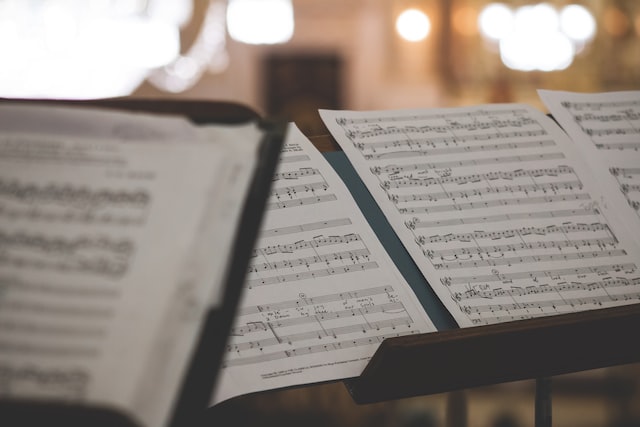Chords are groups of notes played simultaneously, while scales are patterns of notes that are typically played one note at a time. While both have their own distinct roles in making music, understanding how they work together is essential to becoming a more proficient guitarist. Mastering these two concepts will lead to new opportunities for your playing and open the door to greater creativity.
What are a chord and a scale?
In music, chords and scales are two different ways of organizing notes. Scales are a sequence of notes played in ascending or descending order. Chords are created when two or more notes are played together. A chord is a group of notes played together. triads, or three-note chords, are the most basic type of chord. A scale is a succession of musical notes in order of pitch, usually spanning an octave.
The difference between chords and scales
Chords are typically played in harmonic progressions, while scales are often used as a tool for improvisation. Chords tend to be composed of notes that belong to the same scale but can also include notes from other scales that create tension or resolution within the chord progression. Scales, on the other hand, are usually just a set of notes played in succession. Another big difference is that chords typically have a defined root note, while scales do not. The root note of a chord serves as a starting point and gives the chord its name (e.g., C major). Scales, on the other hand, can be started on any note and simply move up or down in pitch from there.
How to use chords and scales in your music
There are many different ways to use chords and scales in your music, so it is important to experiment and find what works best for you. Here are some tips on how to use chords and scales in your music:
- Try using a chord progression in your song. A chord progression is a series of chords that are played in a specific order. This can add a lot of interest and complexity to your song.
- Use different scale patterns when soloing over a chord progression. This can add new sound and texture to your music.
- Experiment with different voicings for your chords. Voicings are the way the notes of a chord are arranged. Changing the voicings can give your chords a whole new sound.
- Try using two or more scales at the same time. This can create interesting sounding melodies and harmonies.
Should I learn chords or scales first?
(Photo by Sigmund on Unsplash )

Most beginner guitarists start by learning some basic chords, such as E minor, A major, and D major. These chords are relatively easy to play, and they form the basis for countless songs. Once you know a few chords, you can start experimenting with different scale patterns.
There is no right or wrong answer when it comes to learning chords or scales first. Ultimately, it comes down to what you want to learn and what you feel comfortable playing. If you’re not sure where to start, try out a few different things and see what works best for you.
How many chords are in a scale?
There are typically seven chords in a scale, but the number of chords can vary depending on the type of scale being used. For example, the major scale has seven notes, so it is typically composed of seven chords. However, there are also eight-note scales, such as the octatonic scale, which are composed of eight chords.
How do you identify chords on a scale?
In short, chords are groups of two or more notes played together, while scales are single notes played one at a time. Chords are usually played on guitars, basses, and keyboards, while scales are mostly used by lead guitarists and soloists.
To identify chords on a scale, you first need to understand the concept of chord construction. Chords are typically built by stacking intervals of thirds on top of a root note. For example, a basic triad chord (consisting of three notes) is built by stacking a third and a fifth interval on top of the root note.
For example, in a C major scale, the notes are C, D, E, F, G, A, B. A C major chord is constructed by taking the notes C, E, G.
You can also build chords by stacking fourths or fifths intervals on top of a root note.
You can use chord charts or chord progressions to help identify chords within a specific scale.
Additionally, you can use the information of the Key of the song (if you know it) and the theory of the relationships between the notes in the scale, to identify chords within that scale.
Are scales harder than chords?
When it comes to learning guitar, some students find chords easier to learn than scales. Other students find scales harder to learn than chords. So, which is actually harder?
In general, chords are considered to be easier to learn than scales. This is because chords only require you to know a few notes, and you can usually play them without having to worry about timing or rhythm. Scales, on the other hand, often require more precise timing and can be more difficult to play in time with the rest of the band.
However, this doesn’t mean that scales are always easy – some people find them quite challenging! It really depends on your individual learning style and preferences. If you’re struggling with either chords or scales, don’t give up – keep practicing and you’ll eventually get the hang of it!
What is the saddest chord in music?
There is no definitive answer to this question as it is subjective. However, many people believe that the saddest chord in music is the minor key. This is because the minor key has a somber and melancholic sound that can evoke feelings of sadness and despair.
What is the hardest scale to play?
There isn’t a definitive answer to this question as it depends on the individual’s level of skill and experience. However, some scales are generally considered to be more difficult to play than others. For example, the harmonic minor scale is often cited as being one of the hardest scales to play due to its unusual interval patterns. Other difficult scales include the melodic minor scale and the chromatic scale, which can be tricky to get your fingers around.
If you’re a beginner guitarist or pianist, then it’s best to start with some of the simpler scales such as the major or minor pentatonic scale. Once you’ve grasped these, you can then move on to tackling some of the more challenging scales. Don’t be discouraged if you find them tough going at first – keep at it and you’ll eventually get there!
Do singers learn scales?
Yes, singers typically learn scales as part of their training. Scales are a fundamental element of music theory and provide the foundation for understanding melody, harmony, and pitch relationships. By learning scales, singers can improve their ability to accurately match pitch, develop a better sense of phrasing, and expand their vocal range.
Singing scales also helps singers to develop good breath control, improve their tone quality, and increase their overall technique. They can also be used as warm-up exercises for singers before performing or recording.
Singing scales in different modes, keys, and with different vocal techniques can help singers to become more versatile and proficient in their singing.
Which scales to learn first as a guitarist?
(Photo by 42 North on Unsplash )

As a guitarist, it is generally recommended to start by learning the major and minor pentatonic scales. These are five-note scales that are easy to play and can be used in a variety of musical styles, including rock, blues, and country.
The major pentatonic scale consists of the 1st, 2nd, 3rd, 5th, and 6th degrees of the major scale, while the minor pentatonic scale consists of the 1st, 3rd, 4th, 5th, and 7th degrees of the natural minor scale.
Once you are comfortable with the pentatonic scales, you can move on to learning the major and minor diatonic scales. These are seven-note scales that are the foundation for most Western music.
After that, you can move on to learning more advanced scales such as the modes of the major scale (Ionian, Dorian, Phrygian, Lydian, Mixolydian, Aeolian, Locrian), the Harmonic and Melodic minor scales, and the blues scale.
It’s important to remember that learning scales isn’t just about playing them up and down, but understanding how they work and how to use them in a musical context. So, practice with them in different keys, try to play them in different positions, and use them to improvise or create your own melodies.
How do you memorize guitar scales?
There are a few different ways that you can memorize guitar scales. The first way is to use a guitar scale diagram. You can find these online or in guitar magazines. They show the notes of the scale as they appear on the fretboard. This can be a helpful way to see where all the notes are located, and to help you visualize the scale pattern.
Another way to memorize scales is to practice them regularly. The more you play them, the more familiar they will become, and the easier it will be to remember them. You can also try breaking down the scale into smaller sections, and Memorizing one section at a time.
It’s also important to understand how scales relate to chords. Chords are built from scales, so understanding the relationship between them can help you better understand both concepts. Take some time to learn about chord progressions, and how different chords sound when played together. As you learn more about music theory, it will become easier to remember both scales and chords.
How many scales are on a guitar?
There are typically six scales on a guitar, which are often referred to as the “standard” or “conventional” scales. These include the major scale, the minor scale, the harmonic minor scale, the melodic minor scale, the chromatic scale, and the whole-tone scale.
Do guitarists know every scale?
No, guitarists do not know every scale. There are an infinite number of scales and it is impossible to know them all. However, guitarists can learn a variety of scales and use them in their playing. Scales provide a framework for soloing and improvisation, and knowing a few different scales can be a helpful tool for any guitarist.
Featured Image By – Photo by Scott Gruber on Unsplash








